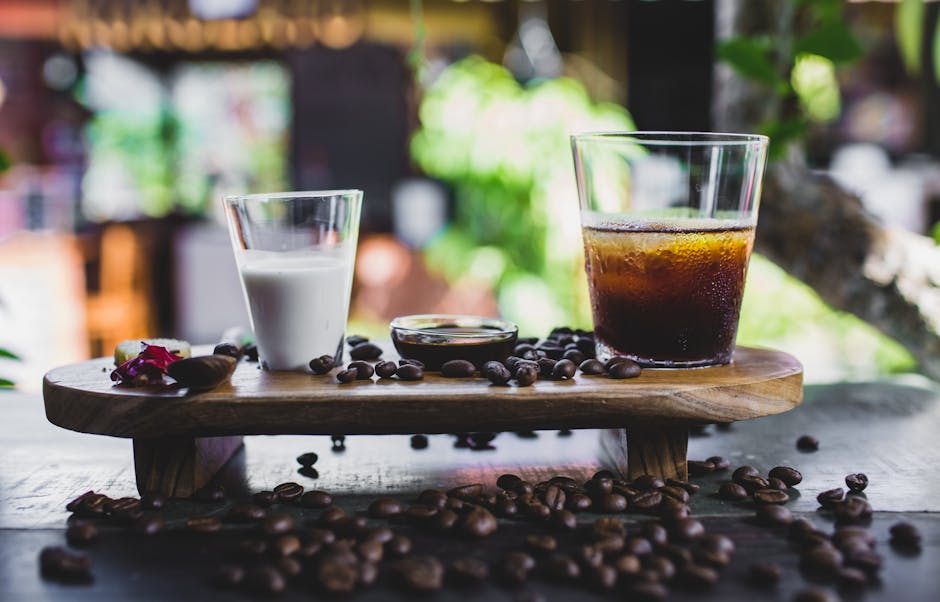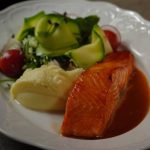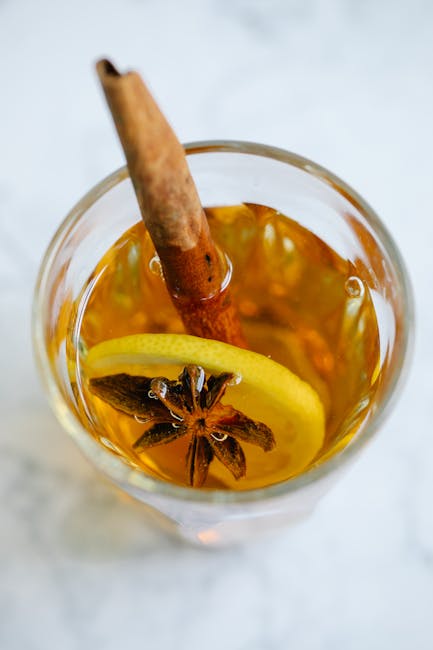Easy Cold Brew Coffee: a refreshing beverage enjoying a surge in popularity, boasts a history far richer and more nuanced than its simple preparation might suggest. While the precise origins remain somewhat murky, the practice of steeping coffee grounds in cold water dates back centuries. Evidence suggests that cold brewing techniques, albeit perhaps less refined than modern methods, were employed in various parts of the world long before the widespread adoption of hot brewing. Some historians point to Yemen, the birthplace of coffee itself, as a potential early adopter, where the climate might have naturally led to experimentation with cold brewing methods.
The modern resurgence of cold brew, however, is a relatively recent phenomenon, gaining significant traction in the United States during the early 2000s. This renewed interest can be attributed to several factors. Firstly, the rise of specialty coffee culture, with its emphasis on nuanced flavor profiles, highlighted the unique characteristics of cold brew: its lower acidity, smoother taste, and absence of the bitter notes often associated with hot-brewed coffee. Secondly, the increasing demand for ready-to-drink beverages, coupled with advancements in packaging and distribution, facilitated the widespread availability of pre-made cold brew, making it accessible to a broader audience.
Today, cold brew coffee is a global phenomenon. Market research indicates a substantial and consistently growing market share for cold brew, with projections suggesting continued expansion in the coming years. This growth is fueled not only by consumer demand but also by the versatility of cold brew. It serves as a refreshing standalone beverage, forms the base for a plethora of creative coffee drinks (from lattes and cocktails to flavored infusions), and even finds its way into culinary applications, adding a unique coffee flavor to desserts and sauces. Its adaptability has cemented its position as a significant player in the ever-evolving landscape of the coffee industry. Interestingly, studies have shown that cold brew often contains higher levels of caffeine than its hot-brewed counterpart, making it a potent pick-me-up.
Beyond its commercial success, cold brew holds a certain cultural significance. It symbolizes a modern approach to coffee consumption – one that emphasizes convenience, smooth taste, and a customizable experience. It represents a departure from traditional methods, reflecting evolving tastes and preferences. Its popularity is a testament to the enduring appeal of coffee, constantly adapting and reinventing itself to meet the demands of a dynamic and increasingly sophisticated market. From its humble beginnings, perhaps in the sun-drenched landscapes of Yemen, to its current status as a global beverage sensation, cold brew coffee’s journey is a testament to its enduring appeal and remarkable adaptability.
Ingredients and Measurements
The beauty of cold brew lies in its simplicity. However, even simple recipes benefit from precision. The ratio of coffee grounds to water significantly impacts the final brew’s strength and flavor profile. We’ll explore the ingredients and their optimal measurements for a consistently delicious cold brew.
Coffee Grounds: The type of coffee grounds you select will dramatically affect the taste of your cold brew. Coarsely ground coffee is crucial. Finely ground coffee will over-extract, leading to a bitter and muddy brew. Think of the consistency of coarse sea salt—this is the ideal grind size. Avoid using pre-ground coffee if possible, as the grounds tend to lose their freshness quickly. For this recipe, we will use 1 cup (approximately 100 grams) of coarsely ground coffee beans. The type of bean is a matter of personal preference; however, we recommend a medium to dark roast for a balanced and less acidic cold brew. Experiment with different roasts to discover your favorite.
Water: The quality of your water directly impacts the taste. Filtered water is recommended to avoid any off-flavors from chlorine or other minerals. Tap water can be used, but a noticeable difference in taste may be apparent. For this recipe, you’ll need 4 cups (approximately 960ml) of cold, filtered water. Using cold water is essential for the cold brew process; hot water will result in a hot brew, defeating the purpose of this method. The temperature of the water should ideally be between 40-50°F (4-10°C).
Optional Additions (Measurements will vary based on preference): While the basic recipe is simple, you can enhance your cold brew with various additions. Sweeteners: Consider adding simple syrup, maple syrup, or honey after brewing to your taste. Start with a small amount and adjust accordingly. A good starting point might be 2-4 tablespoons. Flavorings: Experiment with vanilla extract (1-2 teaspoons), cinnamon sticks (1-2), or cocoa powder (1-2 tablespoons) for unique flavor profiles. Introduce these additions during the steeping process for optimal infusion. Milk/Cream: These are typically added when serving the cold brew. The quantity is purely a matter of personal preference.
Important Note on Measurements: The measurements provided are guidelines. You can adjust the coffee-to-water ratio to achieve your preferred strength. If you prefer a stronger brew, increase the amount of coffee grounds slightly. Conversely, for a milder brew, reduce the coffee quantity. Remember to always use coarsely ground coffee to prevent over-extraction. Proper measurements and high-quality ingredients are key to crafting an exceptional cold brew coffee experience.
Storage: Once brewed, store your cold brew in an airtight container in the refrigerator. It will last for up to two weeks. Proper storage is crucial to maintain freshness and prevent spoilage.
Instructions
Making delicious cold brew coffee at home is easier than you think! Follow these detailed instructions for perfectly smooth, less acidic coffee, ready to enjoy over ice or diluted with milk or cream.
Step 1: Grind Your Beans Start with freshly roasted coffee beans. The grind size is crucial for cold brew; you want a coarse grind, similar in texture to coarse sea salt. Using a burr grinder is ideal for a consistent grind, but a blade grinder will work in a pinch (just pulse it carefully to avoid overly fine grounds). For a 1-quart batch (approximately 950ml), use approximately 1 cup (about 100 grams) of coarsely ground coffee beans. Adjust the coffee-to-water ratio to your preference; more coffee will result in a stronger brew.
Step 2: Combine Coffee and Water In a large, non-reactive container (glass or food-grade plastic are best; avoid metal), combine your coarsely ground coffee with 4 cups (approximately 950ml) of cold, filtered water. Using filtered water is strongly recommended to avoid any off-flavors from chlorine or other minerals in your tap water. Stir the mixture gently but thoroughly to ensure all the grounds are saturated.
Step 3: Steep the Coffee Cover the container with a lid or plastic wrap and refrigerate for at least 12 hours, or preferably 18-24 hours. This extended steeping time is what gives cold brew its smooth, low-acidity profile. Do not stir the mixture during the steeping process. Allow the coffee to slowly extract its flavors and oils.
Step 4: Filter the Coffee After steeping, you need to separate the coffee grounds from the brewed coffee. There are several methods you can use:
- Fine-mesh sieve or strainer: Line a fine-mesh sieve with cheesecloth or a coffee filter for extra security. Slowly pour the coffee through the sieve, pressing gently on the grounds to extract as much liquid as possible. This method requires some patience but is effective.
- Coffee filter: If using a coffee filter, you can place it directly in a funnel and pour the coffee through. This is a quick and easy option.
- Nut milk bag: A nut milk bag works exceptionally well for this purpose. It’s reusable and easy to clean.
Discard the used coffee grounds.
Step 5: Store and Serve Once filtered, pour your cold brew coffee into an airtight container and refrigerate. It will keep for up to two weeks. To serve, dilute your cold brew to your taste. Many people enjoy it over ice, but you can also add milk, cream, sweeteners, or even flavorings like vanilla extract. Experiment to find your perfect cold brew recipe!
Professional Recommendations:
- Experiment with different coffee beans to find your favorite flavor profile.
- Adjust the coffee-to-water ratio to achieve your desired strength.
- Always use fresh, high-quality coffee beans for the best results.
- Clean your equipment thoroughly after each use to prevent mold or bacteria growth.
Enjoy your homemade cold brew coffee!
Brewing Time & Temperature
The magic of cold brew lies in its gentle extraction process, achieved through a long, slow steep at a consistently low temperature. Unlike hot brewing methods, which can lead to bitterness and acidity, cold brewing allows for a smoother, less acidic, and naturally sweeter cup of coffee. Getting the brewing time and temperature right is crucial for achieving the perfect balance of flavor and strength.
Temperature is key. Ideally, you want to use water that’s been chilled to between 68°F (20°C) and 75°F (24°C). Water that’s too warm will extract undesirable compounds from the coffee grounds, leading to a bitter and harsh taste. Conversely, water that’s too cold will result in a weak and under-extracted brew. Using a thermometer is highly recommended for accuracy, especially if you’re experimenting with different coffee beans or grind sizes.
Brewing time is equally important, and it’s highly dependent on your preferred strength and the coffee bean you choose. A good starting point is a 12-18 hour steep for a medium-strength brew. For a stronger brew, you can increase the steeping time to 18-24 hours. However, exceeding 24 hours can lead to over-extraction and a bitter or muddy taste. Experimentation is key to finding your perfect brewing time. Keep detailed notes of your brewing parameters to help you refine your process.
For a batch of cold brew using a standard 1:8 coffee-to-water ratio (e.g., 100g coffee grounds to 800g of water), a 12-hour steep will typically result in a medium-bodied brew. If you prefer a slightly stronger brew, increase the steeping time to 16-18 hours. Remember that the grind size also impacts extraction. A coarser grind will generally require a slightly longer brewing time to achieve the desired strength, while a finer grind will extract more quickly. Start with a medium-coarse grind as a good starting point.
Once you’ve chosen your brewing time, it’s crucial to maintain a consistent temperature throughout the process. Placing your brewing vessel in a cool, dark place is essential to prevent temperature fluctuations. Avoid direct sunlight, which can significantly increase the temperature and negatively impact the flavor profile. A refrigerator is the ideal environment for ensuring a stable brewing temperature. Avoid storing your cold brew in direct sunlight or in a place that experiences significant temperature changes.
After steeping, it’s vital to filter the coffee grounds thoroughly. This step removes sediment and ensures a smooth, clean cup of cold brew. Using a fine-mesh sieve or a cheesecloth is recommended. You can further refine the process by using a coffee filter for a perfectly clear brew. Proper filtration is just as critical to the final product as the brewing time and temperature.
Don’t be afraid to experiment! Adjusting the brewing time and temperature allows you to tailor your cold brew to your specific taste preferences. Keep a brewing journal to note down your experiments, including the type of coffee beans, grind size, water temperature, brewing time, and your final taste assessment. This way, you can consistently replicate your perfect cold brew recipe.
Storage Instructions
Proper storage is crucial for maintaining the freshness and quality of your Easy Cold Brew Coffee. Following these guidelines will ensure you enjoy the best possible flavor for as long as possible. Improper storage can lead to spoilage, off-flavors, and even the growth of unwanted microorganisms.
Immediately after brewing, allow your cold brew concentrate to cool completely. This is vital to prevent bacterial growth. The ideal temperature is below 40°F (4°C). You can achieve this by transferring the concentrate from its brewing vessel into a clean, airtight container and placing it in the refrigerator. Allow at least 2-3 hours for complete cooling.
Choose the right container for storage. Glass containers are ideal for storing cold brew concentrate because they are non-reactive and won’t impart any off-flavors to your coffee. Airtight sealing is essential to prevent oxidation and the absorption of odors from other foods in your refrigerator. Avoid using metal containers, as they can react with the coffee and affect its taste. Ensure your chosen container is thoroughly cleaned and dried before use.
Refrigerate your cold brew concentrate. Once cooled, store your concentrate in the refrigerator at a temperature between 35°F and 40°F (2°C and 4°C). At this temperature, your cold brew should remain fresh for up to two weeks. However, for optimal flavor, consume it within the first week. Beyond two weeks, the quality will decline noticeably, and the risk of spoilage increases significantly.
Properly label and date your cold brew. This will help you track how long it’s been stored and ensure you consume it within the recommended timeframe. Write the date of brewing directly on the container using a waterproof marker. This simple step will prevent confusion and ensure you don’t accidentally consume stale cold brew.
Avoid freezing your cold brew concentrate. While you might think freezing extends its shelf life, it actually alters the texture and flavor of the cold brew. Freezing can cause the coffee to become watery and lose its rich, smooth consistency upon thawing. It’s much better to make smaller batches and consume them within the recommended timeframe than risk compromising the quality by freezing it.
Observe your cold brew before consumption. Before drinking, inspect your cold brew for any signs of spoilage. This includes unusual discoloration (e.g., mold growth), a foul odor, or changes in texture. If you notice anything unusual, discard the cold brew immediately. Your safety and health are paramount. Do not consume cold brew that shows any signs of spoilage.
By following these storage instructions diligently, you can enjoy delicious, high-quality cold brew coffee for up to two weeks. Remember, fresh cold brew tastes best, so plan your brewing accordingly and consume it within the optimal timeframe for the richest flavor and aroma.
Serving Suggestions
Your Easy Cold Brew Coffee is now ready to be enjoyed! The rich, smooth flavor lends itself to a variety of serving styles, allowing you to customize your experience to perfection. Here are some suggestions to help you get the most out of your homemade cold brew:
Straight Up: For the purist, simply pour your cold brew coffee over ice. Start with 6 ounces of cold brew in a glass filled with ice. This allows you to appreciate the pure, concentrated flavor without any additions. Adjust the amount of cold brew to your preferred strength. A good starting point is a 1:1 ratio of cold brew to water or milk if you prefer a milder taste.
Classic Cold Brew with Milk or Cream: Adding milk or cream enhances the cold brew’s naturally sweet notes and creates a more velvety texture. We recommend starting with a 1:1 ratio of cold brew to milk (dairy or non-dairy). For example, combine 4 ounces of cold brew with 4 ounces of your preferred milk. Sweeten to taste with your favorite sweetener – granulated sugar, honey, maple syrup, or agave nectar all work well. Experiment with different milk types – almond, oat, soy, or coconut milk each impart a unique flavor profile.
Iced Coffee with a Twist: Elevate your cold brew with flavored syrups. Popular choices include vanilla, caramel, hazelnut, or peppermint. Start with 6 ounces of cold brew and add 1-2 tablespoons of syrup, adjusting to your sweetness preference. Stir gently to combine. Remember to taste as you go to avoid over-sweetening. You can also experiment with flavored creamers for a richer, more decadent experience.
Cold Brew Cocktails: The intense flavor of cold brew makes it an excellent base for a variety of cocktails. A simple Cold Brew Coffee Martini combines 2 ounces of cold brew, 1 ounce of vodka or gin, and a splash of simple syrup. Shake with ice and strain into a chilled martini glass. Garnish with a coffee bean. For a more refreshing option, try a Cold Brew Iced Latte with a shot of your favorite liqueur. The possibilities are endless.
Nitrogen-Infused Cold Brew (Nitro Cold Brew): If you have access to a nitrogen-infused coffee system, your cold brew will be elevated to another level. The nitrogen infusion creates a creamy, cascading texture similar to a Guinness stout. Follow the manufacturer’s instructions for your specific system. This method is best enjoyed immediately after nitrogen infusion.
Storage Recommendations: Store leftover cold brew in an airtight container in the refrigerator for up to two weeks. The flavor will remain consistent, though some subtle changes might occur over time. Avoid storing cold brew in direct sunlight or at room temperature, as this can lead to spoilage.
Important Note: The strength of your cold brew will depend on the coffee-to-water ratio you used during the brewing process. Adjust the amount of cold brew and your additions accordingly to achieve your desired taste. Don’t be afraid to experiment!
Optional Flavor Additions
While the base cold brew recipe delivers a smooth, rich coffee experience, the beauty lies in its adaptability. Experimenting with flavor additions allows you to craft a personalized cold brew that perfectly suits your palate. Remember to always add your chosen flavorings after the brewing process is complete and the coffee has cooled to room temperature to avoid impacting the brewing process itself and to prevent unwanted bitterness.
Vanilla: A classic pairing, vanilla bean paste or extract adds a subtle sweetness and warmth. For a robust vanilla flavor, use 1-2 teaspoons of high-quality vanilla bean paste per 4 cups of cold brew. If using extract, start with ½ teaspoon per 4 cups and adjust to taste. Avoid using imitation vanilla extract, as its artificial flavor can clash with the coffee’s natural notes.
Chocolate: Indulge in a mocha-inspired cold brew by incorporating cocoa powder or chocolate syrup. For a subtle chocolate hint, add 1-2 tablespoons of unsweetened cocoa powder to 4 cups of cold brew, stirring well until dissolved. For a richer chocolate experience, use 2-4 tablespoons of high-quality chocolate syrup, adjusting to your preferred sweetness level. Remember to whisk thoroughly to ensure even distribution and prevent settling.
Spices: Experiment with warming spices like cinnamon, cardamom, or nutmeg to create a unique and comforting cold brew. Start with a small amount – approximately ½ teaspoon of ground spice per 4 cups of cold brew – and taste before adding more. Whole spices can also be added during the brewing process for a more intense flavor profile, but be sure to remove them before serving to avoid grit in your drink. Cinnamon sticks work particularly well for this, adding a subtle warmth without overpowering the coffee.
Citrus: Brighten your cold brew with a zesty twist of citrus. A simple squeeze of fresh orange, lemon, or lime juice can add a refreshing acidity and aromatic lift. Start with the juice of ½ a citrus fruit per 4 cups of cold brew and adjust to taste. Avoid overdoing it, as too much citrus can become overpowering. Alternatively, add thin slices of citrus fruit directly to the finished cold brew during chilling. Remove before serving to prevent bitterness.
Sweeteners: While some find cold brew naturally sweet enough, others prefer added sweetness. Consider simple syrups (like vanilla or caramel), agave nectar, honey, or maple syrup. Add your chosen sweetener to taste, starting with a small amount and gradually increasing until you achieve your desired sweetness. Remember that sweeteners can alter the overall taste profile, so adjust your other flavor additions accordingly.
Other creative options: Don’t be afraid to experiment! Consider adding a splash of almond or coconut milk for creaminess, a dash of peppermint extract for a festive twist, or even a pinch of sea salt to enhance the coffee’s flavor complexity. Always start with small amounts and taste as you go to avoid ruining your batch with an overpowering flavor.
Important Note: When adding flavorings, consider the overall balance of flavors. Too many additions can muddle the taste, obscuring the coffee’s natural character. Start with one or two additions and gradually experiment to find your perfect combination.
Easy Cold Brew Coffee: Recommendations
Serving Suggestions: Enjoy your Easy Cold Brew Coffee in a variety of ways to suit your taste and the occasion. A classic approach is to serve it over ice, either straight or diluted with water or milk to adjust the strength. For a sweeter treat, add a splash of your favorite milk (dairy or non-dairy) and a touch of sweetener like maple syrup, honey, or a sugar substitute. Consider experimenting with flavored syrups like vanilla, caramel, or hazelnut for a more decadent experience. A squeeze of fresh lemon or lime can add a refreshing twist, while a sprinkle of cinnamon or cocoa powder provides a warm, comforting note. For a truly indulgent treat, try adding a scoop of your favorite vanilla ice cream to create a delicious cold brew float.
Storage Conditions: For optimal freshness and flavor, store your Easy Cold Brew Coffee properly. Store your cold brew in an airtight container in the refrigerator. It will typically remain fresh for up to two weeks. Avoid exposure to direct sunlight or extreme temperatures, as this can affect the taste and quality of your brew. If you notice any signs of spoilage, such as unusual cloudiness, mold, or off-putting odor, discard it immediately. For longer storage, consider freezing your cold brew in ice cube trays or airtight containers for up to three months. When ready to use, thaw overnight in the refrigerator.
Complementary Dishes: The rich, robust flavor of cold brew coffee pairs beautifully with a variety of sweet and savory dishes. For a delightful breakfast combination, try pairing your cold brew with pastries like muffins, croissants, or scones. The smooth coffee complements the buttery sweetness of these treats perfectly. For a more substantial meal, consider serving it alongside breakfast burritos, pancakes, or waffles. In the afternoon, a cold brew pairs well with lighter fare such as fruit salads, yogurt parfaits, or cheese and crackers. For a unique savory pairing, try enjoying your cold brew with a light salad featuring grilled chicken or fish. The coffee’s bold flavor cuts through the richness of the salad dressing, creating a balanced and refreshing combination.
Nutritional Information (per 8oz serving, approximate values may vary based on coffee beans and added ingredients): Calories: 5-15 (depending on added milk/sweetener). Fat: 0-2g (depending on added milk/sweetener). Carbohydrates: 0-10g (depending on added milk/sweetener). Protein: 0-2g (depending on added milk/sweetener). Note: This information does not include any added sweeteners, milk, or other ingredients. Nutritional content will change significantly depending on additions.
Important Considerations: Remember to adjust the strength of your cold brew to your personal preference by adjusting the coffee-to-water ratio. If you find it too strong, simply dilute it with more water or milk. Experiment with different coffee beans to discover your favorite flavor profile. The type of bean significantly impacts the final taste of your cold brew. Finally, always prioritize food safety. Proper storage and handling are crucial to prevent bacterial growth and ensure a safe and enjoyable beverage.





